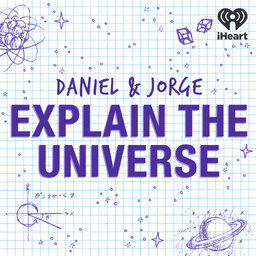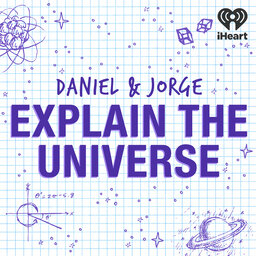Daniel answers Listener Questions about how to read science headlines, gravitational slingshots, lorentz symmetry and the speed of light!
Daniel answers questions from listeners like you! Got questions? Come to Daniel's public office hours: https://sites.uci.edu/daniel/public-office-hours/
Learn more about your ad-choices at https://www.iheartpodcastnetwork.com
See omnystudio.com/listener for privacy information.
 Daniel and Jorge Explain the Universe
Daniel and Jorge Explain the Universe


